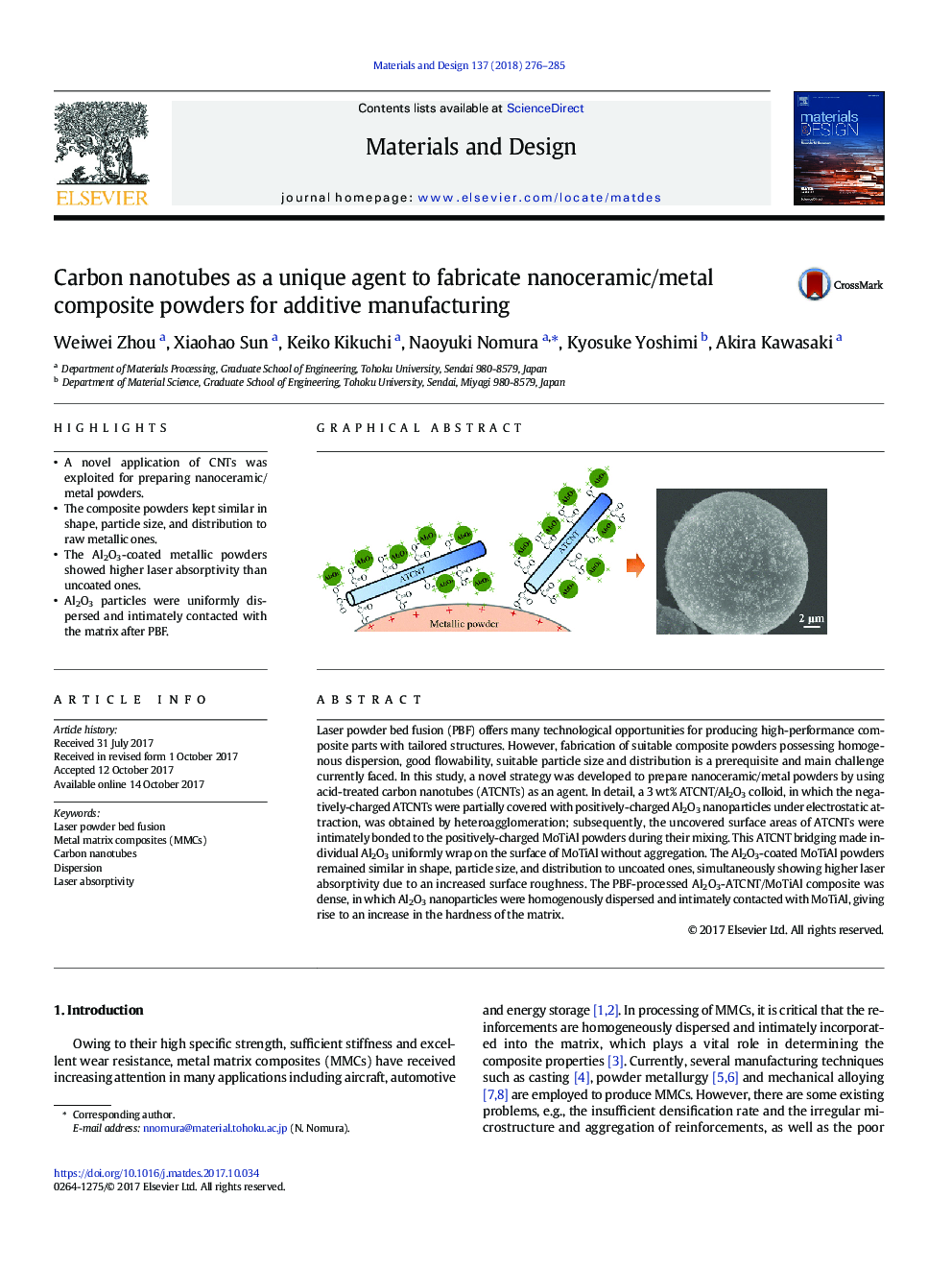| Article ID | Journal | Published Year | Pages | File Type |
|---|---|---|---|---|
| 5023080 | Materials & Design | 2018 | 10 Pages |
â¢A novel application of CNTs was exploited for preparing nanoceramic/metal powders.â¢The composite powders kept similar in shape, particle size, and distribution to raw metallic ones.â¢The Al2O3-coated metallic powders showed higher laser absorptivity than uncoated ones.â¢Al2O3 particles were uniformly dispersed and intimately contacted with the matrix after PBF.
Laser powder bed fusion (PBF) offers many technological opportunities for producing high-performance composite parts with tailored structures. However, fabrication of suitable composite powders possessing homogenous dispersion, good flowability, suitable particle size and distribution is a prerequisite and main challenge currently faced. In this study, a novel strategy was developed to prepare nanoceramic/metal powders by using acid-treated carbon nanotubes (ATCNTs) as an agent. In detail, a 3Â wt% ATCNT/Al2O3 colloid, in which the negatively-charged ATCNTs were partially covered with positively-charged Al2O3 nanoparticles under electrostatic attraction, was obtained by heteroagglomeration; subsequently, the uncovered surface areas of ATCNTs were intimately bonded to the positively-charged MoTiAl powders during their mixing. This ATCNT bridging made individual Al2O3 uniformly wrap on the surface of MoTiAl without aggregation. The Al2O3-coated MoTiAl powders remained similar in shape, particle size, and distribution to uncoated ones, simultaneously showing higher laser absorptivity due to an increased surface roughness. The PBF-processed Al2O3-ATCNT/MoTiAl composite was dense, in which Al2O3 nanoparticles were homogenously dispersed and intimately contacted with MoTiAl, giving rise to an increase in the hardness of the matrix.
Graphical abstractDownload high-res image (153KB)Download full-size image
